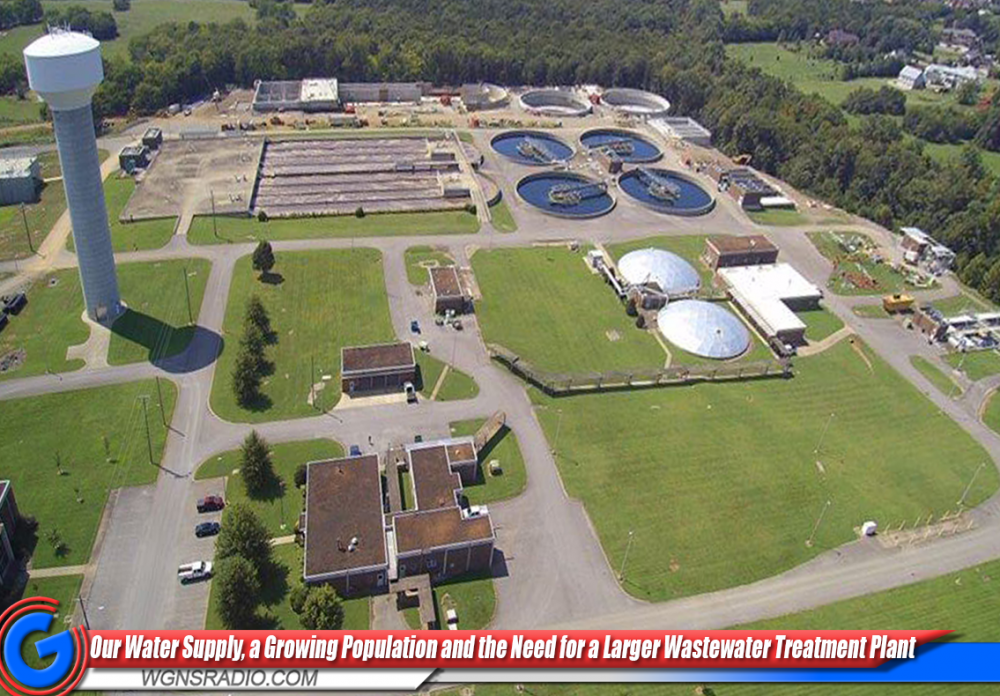MURFREESBORO, TN - Have you ever wondered where your drinking water comes from? In places like Murfreesboro... That was Valerie Smith, director of the Murfreesboro Water Resources Department. Smith said that water is pumped from the intake stations to the water treatment plant... Murfreesboro's water treatment plant is close to the VA Hospital, near the intersection of West Thompson Lane (State Route 268) and Memorial Boulevard (Highway 231).
When discussing the unprecedented population growth of Rutherford County, one critical question arises: do we have enough water to meet the increasing demand? Smith highlighted how Murfreesboro Water Resources work closely with the Consolidated Utility District (CUD)...
One key issue for the Water Resources Department is securing future approval to expand its wastewater treatment plant... (Wastewater plant pictured above article) Currently, the plant can treat 24 million gallons per day, but reports show the need to increase that capacity to 32 million gallons per day. This expansion would help support Murfreesboro as Rutherford County's population is projected to exceed 503,000 by 2040, according to a study by the UT Boyd Center for Business and Economic Research.
Preliminary engineering and permitting for the expansion are already underway. If approved, construction could start as early as 2027. The expansion would extend Murfreesboro's wastewater capacity through 2048, by which time the county's population is expected to surpass 570,000.
Growth is also pushing the administrative offices for the water department to a brand new location over the weeks to come. The Water Resources Department will soon move its administrative offices due to the upcoming Keystone Project, a large-scale mixed-use development in downtown Murfreesboro... The department will move from Vine and NW Broad Streets to 316 Robert Rose Boulevard, behind Home Depot. This new location will consolidate multiple departments, including finance, customer service, engineering, and GIS, under one roof. The Keystone Project will bring new retail, office space, condominiums, a parking garage, and a boutique hotel, requiring the demolition of several city-owned buildings, including the current Water Resources office.
MORE DETAILS: Wastewater plays a big role in our day-to-day life and that's where Murfreesboro's gravity fed sewer system comes into play. Around 45 to 50 sewage pump stations throughout Murfreesboro push sewage to the water resource recovery facility, also known as the wastewater plant... The wastewater plant is next to the Riverbend Subdivision along North Thompson Lane (State Route 268) and from there, water is filtered into one of two different systems - - one of those systems is the re-purified water system... And the other system is specifically for drinking water (learn more about the treatment process HERE).
Understanding the source of a community's water supply helps residents recognize the importance of keeping waterways free of pollutants. Equally important is knowing how pollutants enter these bodies of water. One common way toxins make their way into water sources is through stormwater runoff from parking lots, roadways, and other surfaces.
Keeping Water Sources Clean - Just last month, the Tennessee Department of Agriculture announced the availability of grants to help reduce "nonpoint source pollution" across the state. Nonpoint source pollution occurs when runoff from rain carries pollutants into waterways such as rivers, creeks, and lakes.
Now through December 2, 2024, the agriculture department is accepting proposals for projects aimed at reducing pollutants in natural water sources. One of their focuses is on raising awareness about contaminants that can eventually end up in our drinking water, affecting what makes it to the dinner table.
Common pollutants that flow from parking lots, roads, and even residential driveways include oil that may drip from vehicles, insecticides and fertilizers used in yards, and agricultural chemicals that are washed into rivers and streams during rainfall. Also of concern, the erosion of roadways that can lead to sediment buildup, which is carried into drainage systems every time it rains—the list of contaminants grows as more homes and businesses are built daily.
Eligible grant applicants include local governments, regional agencies, soil and water conservation districts, state universities, and nonprofit organizations. The submission deadline is December 2, 2024 (Click HERE for more details or Click HERE for the Request for Proposal details).
SNAPSHOT: Hear our condensed interview with Valerie Smith on the WGNS Roundtable with host Chip Walters above this article.





